






Managing Editor Consultant Editors
Sarath
Emma
Naomi
Editorial Enquiry: admin@cxoomagazine.com
Art & Design
Charlie
Free Subscription www.cxomagazine.com
International
Branding & Marketing Partnership
Jennifer
Monica
Rachel
www.linkedin.com/company/cxomagazinepage www.facebook.com/CXOMagazinePage


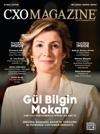
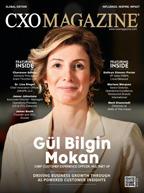

Not long ago, I found myself chatting with a friend who had just switched banks—not for better rates or perks, but because “the chatbot actually listened.” That made me pause. A chatbot... listening? Or was it just really good at pretending?
That one remark says a lot about where we are today. In a world of 24/7 connections, lightning-fast apps, and smart systems that finish our sentences, customer experience (CX) has become the heartbeat of every business. It’s not just about being efficient anymore—it’s about being remembered.
Let’s be honest: tech is doing some heavy lifting. AI, generative tools, and automation are streamlining everything from support tickets to personalized offers. We’ve entered an era where data can predict your next move before you even know it. But here’s the twist—while customers love speed and convenience, they still crave something deeper: connection, care, and a sense of being seen.
So the big question is—how do we keep the human in the loop?
In this issue of CXO Magazine, we dig into that very question. You’ll hear from leaders who are blending tech with heart and strategy with soul. Our cover story shines the spotlight on Gül Bilgin Mokan, Chief Customer Experience Officer at Multinet Up. With a background that crosses engineering, IT, and automotive, Gül is not your typical CX leader—and that’s exactly what makes her stand out. From leading digital transformation to championing women in tech, she’s proof that empathy and innovation aren’t just compatible—they’re unstoppable together.
The issue is packed with stories, strategies, and insights from folks rethinking what great CX looks like. Some are building smarter systems. Others are building stronger relationships. All of them are focused on one thing: making every customer feel like the only customer.
So as you flip through these pages, we hope you find ideas that spark change, stories that resonate, and maybe even a reminder that good business starts with good listening.
Let’s keep the conversation going. Reach out, share your thoughts, and let us know how you’re reimagining CX in your world.
Happy reading!

Sarath Shyam
Chief Customer Experience Officer, Multinet Up


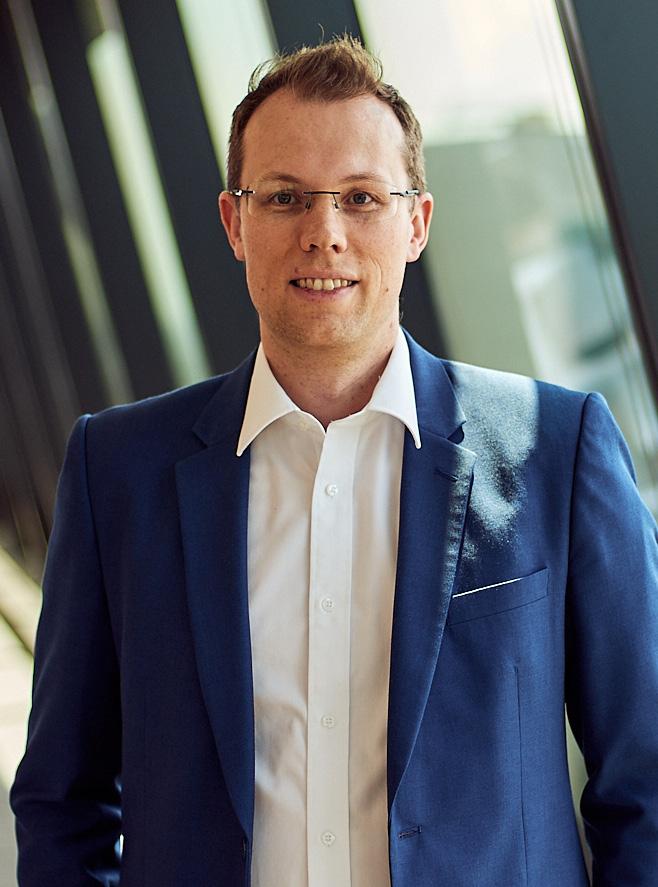
18
James Johnstone, Associate DirectorManaged Operations Presales (CX & ITO), Datacom
Transforming Operations for Enhanced Customer Engagement INTERVIEW
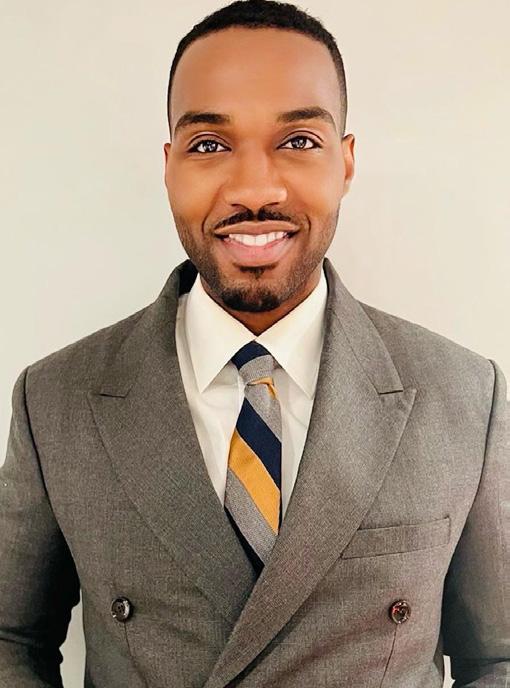
40
Charmone Adams, Advisory Principal with Grant Thornton LLP
The Future of Risk Management: How Companies Can Build a Stronger, More Adaptive Framework
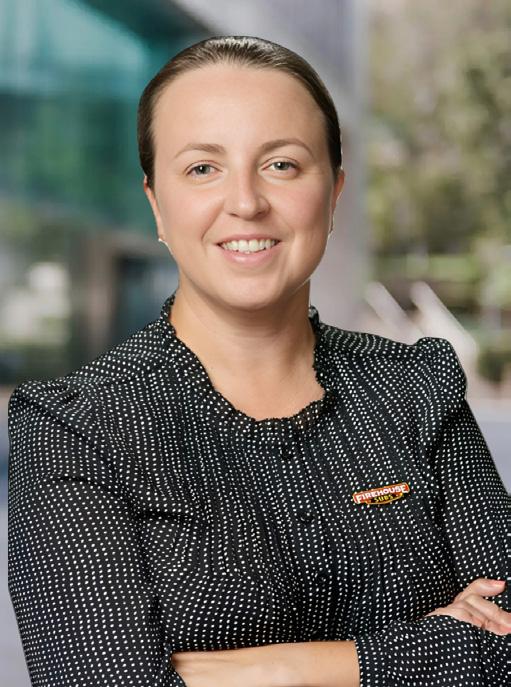
34
Mariana Marques, Senior Director, Operations Excellence, Restaurant Brands International
Driving Operational Excellence and Brand Growth
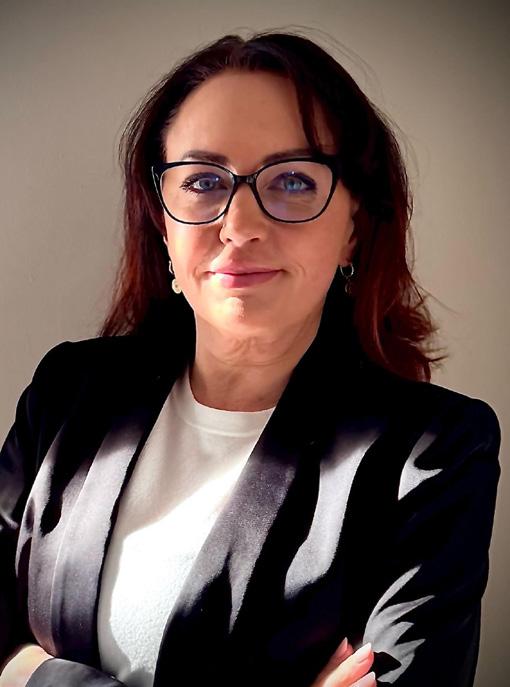
58
Kathryn Simons-Porter, VP Sales EMEA, Local Measure
Revolutionizing Customer Experience with AI
28
Dr. Lisa Riegel, Chief Innovation Officer at JAKAPA, LLC
Moving from aspirational to operational: The 7C Commitment Framework


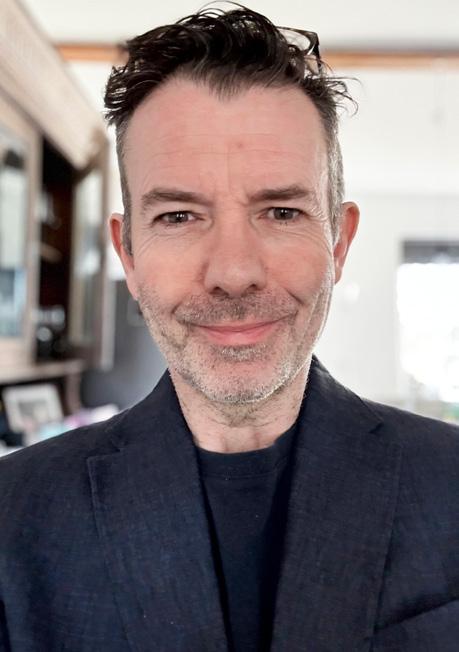
52 James Booth, Founder and CEO, Scoota Creativity and Digital Marketing
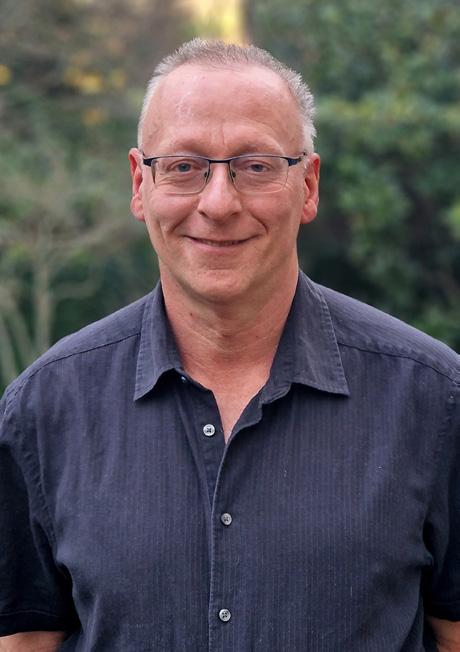
64
Mark Eisenstadt, Chairman at Skills of The Future
How To Create & Run A Successful SME

Gül Bilgin Mokan is the Chief Customer Experience Officer at Multinet Up. After earning her degree in Industrial Engineering from Gazi University, she studied Business Management in London. She began her career in IT and later worked in the automotive industry. In 2014, she joined Multinet Up, where she led key projects in process develpoment and risk management before focusing on customer experience and digital transformation. She integrated technologies like RPA, AI, Gen AI, No/Low Code sytems into customer operations. Mokan has received numerous awards and actively mentors young talents while supporting educational NGOs.
Recently, in an exclusive interview with CXO Magazine, Gül shared insights on what fuels her passion for AI-driven CX and digital transformation, her secret to striking a work-life balance, future plans, words of wisdom, and much more. The following excerpts are taken from the interview.

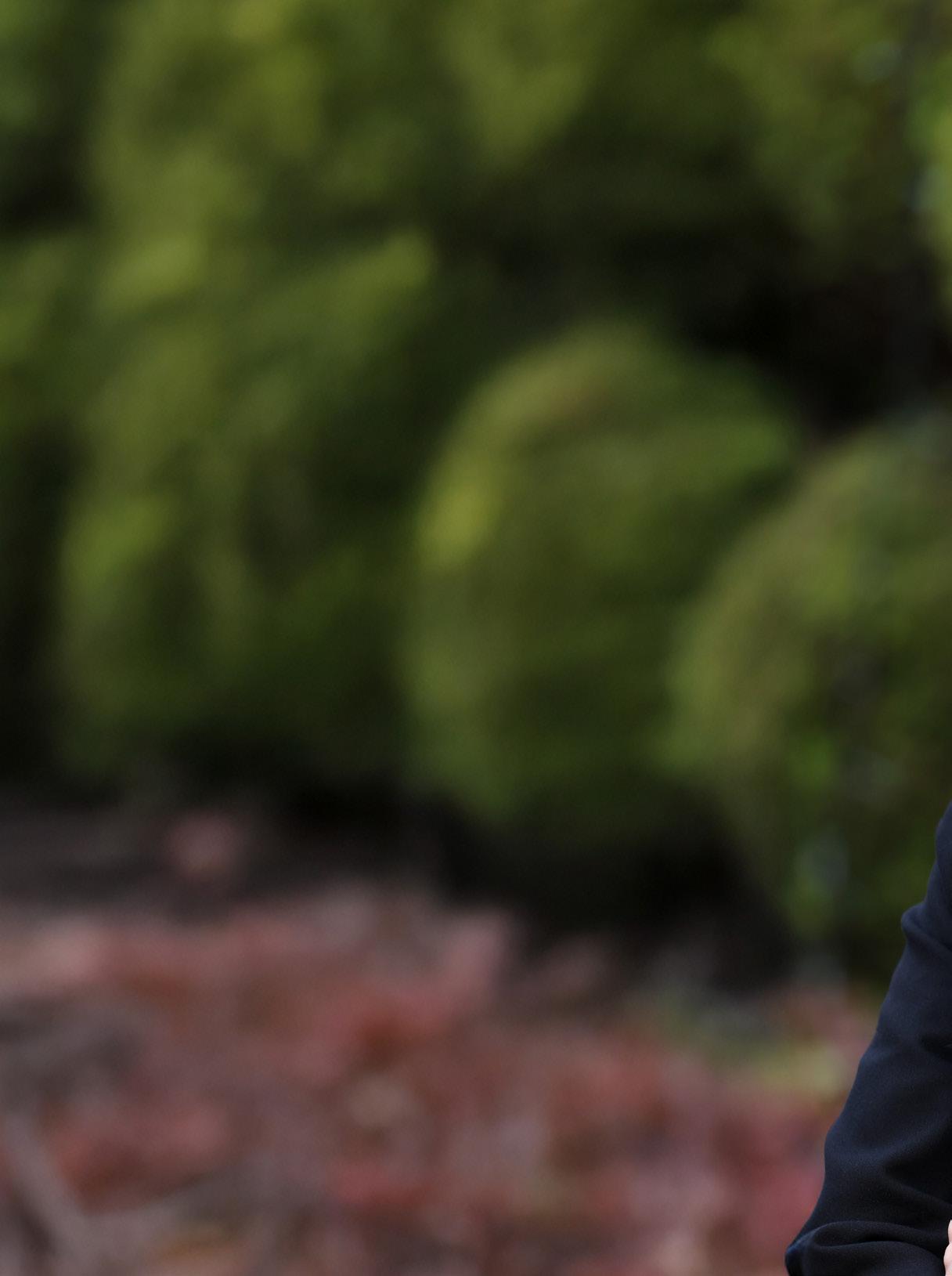

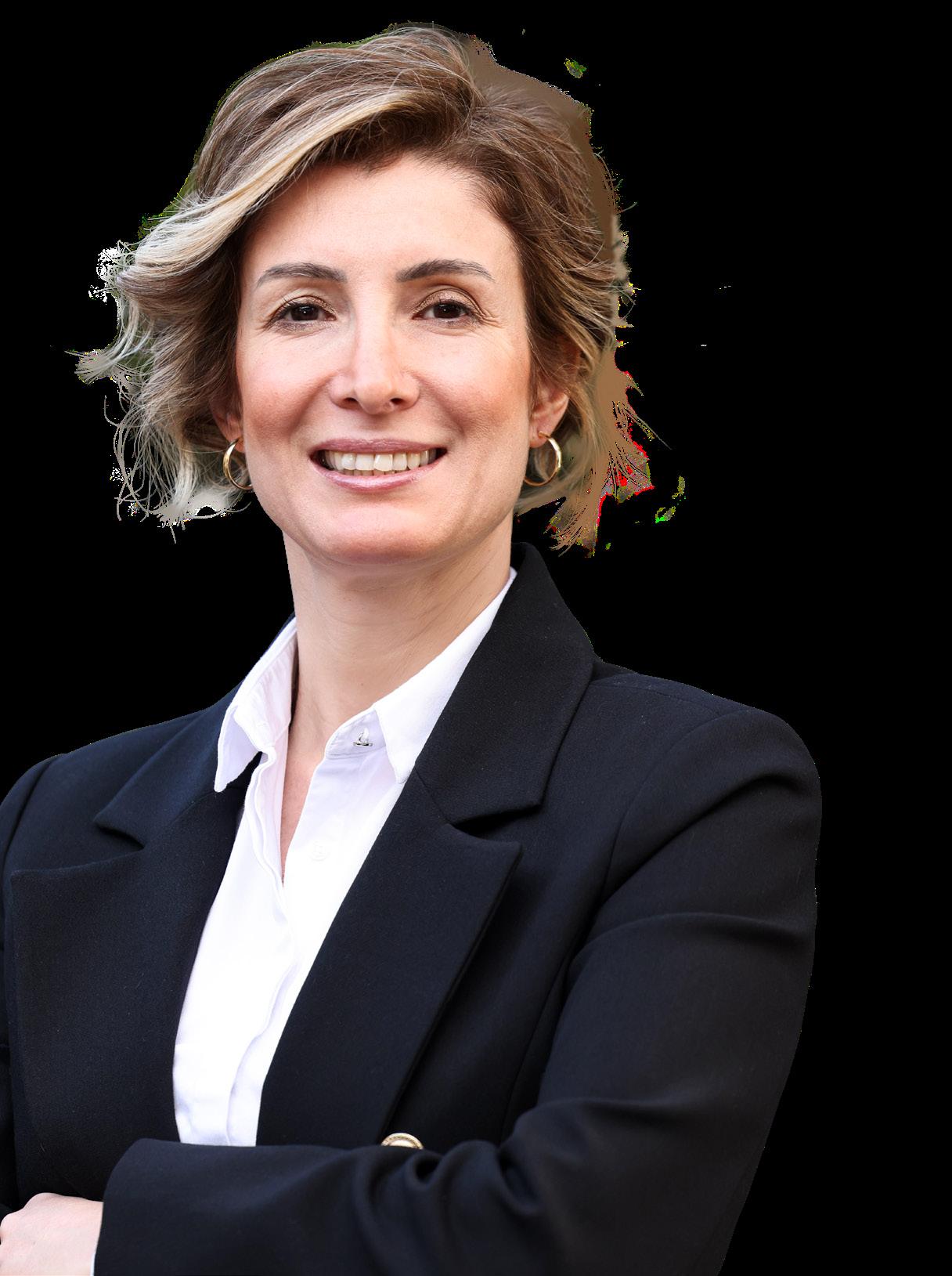
Hello Gül. What fuels your passion for AIdriven customer experience and digital transformation? How do you stay up-todate with the latest trends?
The direct and measurable positive impact of artificial intelligence on customer experience is the main source of my passion for this field. When we approach AI as a system that supports humans in decision-making processes, we can see its true potential in customer communication. Typically, when people think of AI, the first thing that comes to mind is chatbot-based ready-response systems. However, I personally find the efficiency we gain from decision support systems much more valuable.
Thanks to natural language processing techniques, we can analyze customer sentiment in both written and verbal communications in real time. It becomes possible to detect dissatisfaction hidden between the lines before a complaint is even voiced. This happens at a speed and scale beyond human capacity. AI enables us not only to diagnose issues but also to generate both individual and systemic solutions. As Multinet Up, we can perform a much deeper experience analysis that goes beyond conventional customer surveys.
Digital transformation today is no longer limited to mobile apps or self-service systems. With generative AI and no-code/low-code platforms, we’re on the brink of an entirely new digital era. These technologies allow us to rapidly implement customer experienceenhancing solutions with our own teams, without being dependent on IT departments. This freedom and speed motivate me more and more every day.
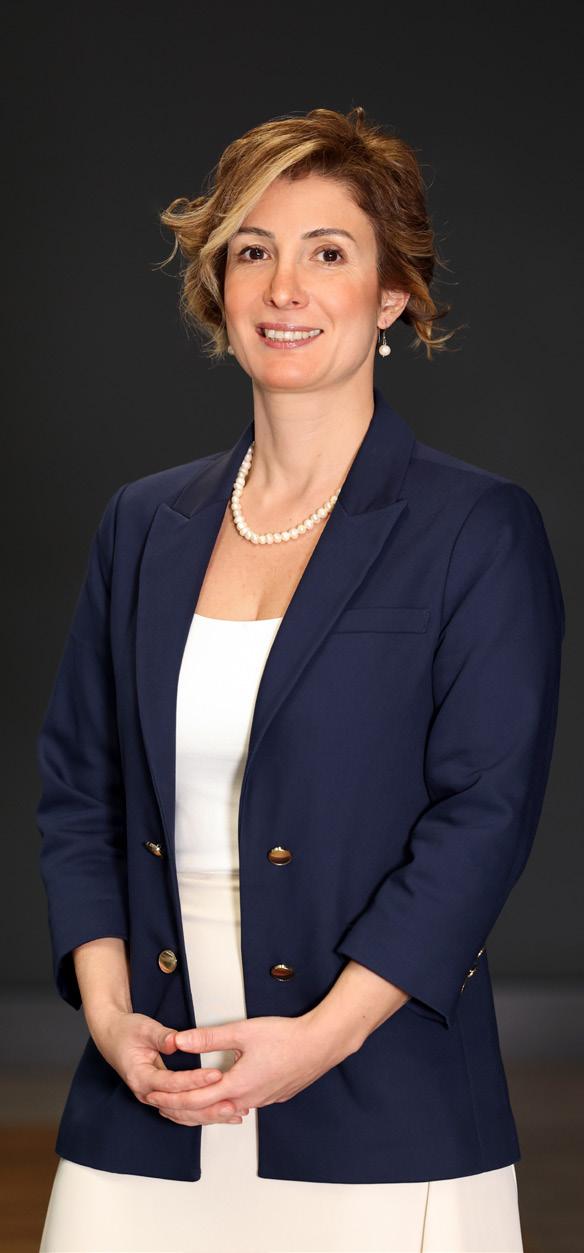
With generative AI and no-code/low-code platforms, we’re on the brink of an entirely new digital era
What do you love most about your current role?
What I love most about my role is the ability to develop innovative projects using our internal resources. Within the Multinet Up Customer Experience team, we've established an AI and no-code/low-code team, mostly consisting of Gen Z professionals. Through this team, we’re able to understand the voice of the customer more clearly by positioning AI as a decision support system at customer interaction points.
We’ve also integrated generative AI into our bot infrastructure. We actively use large language models (LLMs) to improve the language skills and knowledge levels of our representatives. Tools like RPA and Microsoft Power Platform help us speed up our customer operations and raise quality standards.
This entire process has shown us that our dependency on IT teams has significantly decreased when it comes to improving customer experience. Now we can implement the solutions we need with agility and flexibility through our own internal dynamics. This not only boosts our team’s confidence but also strengthens our passion for our work
How do you envision the future evolution of AI-driven customer experience? What skills will become most essential?
AI-driven customer experience is demanding brand new skill sets for both customer service representatives and experience professionals. It's not just about natural language processing anymore—being able to analyze customer behavior through machine learning, detect patterns, and forecast trends is becoming crucial. In the future, the ability to extract
meaningful insights from big data and turn them into actionable strategies will be at the heart of customer experience projects.
Generative AI makes it possible to offer more natural and human-like responses to customers. At the same time, we’ll see a rise in systems that support representatives in critical human interaction points. These tools will not only provide faster and more personalized experiences for customers but also allow agents to take on more strategic roles. The ability to use no-code and low-code platforms will be one of the keys to this transformation. That’s why I believe professionals who can adapt quickly, are open to learning, and use available tools creatively will stand out.
At Multinet Up, we’ve already initiated this transformation internally. We are training our customer representatives to become individuals who can develop projects using AI and digital tools. Since these technologies are still very new, it's not easy to find people externally with the required competencies. So we focus on nurturing eager learners within the company. This way, we prepare our talents for the future and manage the transformation faster and more sustainably without relying on external sources.
Do you notice a lack of women in the customer experience field? If so, what do you think causes this?
I don’t believe that women are underrepresented in the field of customer experience. On the contrary, I observe that they play very impactful roles and make a real difference. Customer experience is a domain that prioritizes qualities like empathy, a holistic perspective, and a human-centered approach—traits that naturally align with women's strengths. However, as the touchpoints with technology increase, I do believe there is a risk of imbalance. Women’s participation in technology projects is still not at the desired level. Over time, this could lead to a decrease in women’s influence in the customer experience field. That’s why I find it essential to involve more female professionals in nextgeneration technologies like generative AI and no-code/low-code platforms. Otherwise, we risk losing the valuable ground we've gained today in the future.
Looking back, which women have had the greatest impact on your career?
First and foremost, I want to mention my mother and my sister. They’ve always been my
biggest supporters throughout my education and various stages of life—during both successes and failures. Their belief in me has consistently nurtured my self-confidence and passion for learning.
In my professional journey, the strong female leaders I've worked with have had a tremendous impact on me. Female managers I reported to inspired me with their leadership styles and presence. I closely observed not only how they
worked but also how they handled interpersonal relationships, and I’ve taken many of them as role models.
Additionally, mentorship from successful female leaders across various sectors has created significant turning points in my career. Sometimes, you can get stuck in similar thought patterns within your own organization, and these outside perspectives gave me a whole new vision.


I’ve also been deeply influenced by women I met through social responsibility projects— women with whom we not only created positive impact but also intellectually enriched one another. I can say that I am who I am today because of all these women who have inspired me at different times in my life.
Lastly, I want to acknowledge all the women who’ve touched my life in any way. Close friends, women I’ve chatted with in passing, relatives I’ve exchanged ideas with… I believe there is something to learn from every woman. Women are the source of life. Each one is a precious treasure—if only we make the effort to truly understand them.
What does the concept of “authentic leadership” mean to you?
To me, authentic leadership is about embracing a new generation of leadership understanding. We can all see that classical leadership models fall short in addressing the needs of the modern world. Daniel Goleman's books on leadership summarize this transformation
A leader’s primary role is to lay out a clear strategy and keep the team focused around that vision
well. Today’s teams don’t expect their leaders to plan everything from A to Z or produce all the solutions themselves. Instead, they value leaders who can create environments for collaboration and ignite collective intelligence. I wholeheartedly believe in this approach.
A leader’s primary role is to lay out a clear strategy and keep the team focused around that vision. Additionally, forming inclusive teams and facilitating healthy discussions are vital parts of leadership. Of course, ensuring that these environments are sustainable by equipping the team with the necessary skill sets is also the leader’s responsibility.
I also believe a leader should be intellectually well-rounded. Following art, literature, technology, and current trends broadens a leader’s perspective and helps inspire their team. These areas serve as powerful compasses for forecasting the future. When a leader navigates using these compasses, the team naturally completes the journey with success.
I can’t say I had a good work-life balance in the early stages of my career. But as I focused on developing my leadership skills, my teams grew stronger and my workload became more manageable. Of course, that alone isn't enough. A strong social life is one of the most important elements in maintaining balance.
Peter Drucker's quote has always inspired me: “If you were to advise a management group on how to be more successful at work, what would you suggest?” The answer: “Learn to play the violin.” This perspective perfectly illustrates how skills we gain in our personal
lives help balance professional intensity and develop leadership competencies.
Personally, I’ve found balance through meaning-making pursuits beyond just work. I actively participate in social responsibility projects. Especially mentoring students and volunteering in women leadership solidarity programs have offered me incredible opportunities for human growth. They’ve also helped me manage my time more consciously and productively.
And I can clearly say this: when you stop seeking all meaning in your career, your ambitions decrease, your risk of making mistakes lessens, and your inner peace grows. This awareness forms the true foundation of work-life balance.
With the transformation initiated by AI, especially generative AI and no-code/lowcode systems, I aim to deepen my expertise and lead impactful projects in this field. However, I don’t want this accumulated knowledge to remain limited to the organization I work for.
In the future, I plan to build a knowledge and experience hub to support different organizations in strengthening their positions in a competitive landscape. I don’t yet have a defined format—this could be a consultancy service, a book, a blog series, or keynote speeches. Maybe all of them. But one thing is clear: my purpose in life is to grow through shared learning. I don’t want my insights and experiences to remain just mine. The more people I can share them with, the more people I can inspire, the more valuable it feels. I truly believe in the magic of growing together.
AI is not just a technical subject—it also involves understanding customer behavior, analyzing data, and crafting meaningful experiences from those insights
What advice would you give to someone who wants to enter the field of AI-
Anyone looking to enter the field of AIdriven customer experience needs to embark on a multifaceted learning journey without ever losing their sense of curiosity. AI is not just a technical subject—it also involves understanding customer behavior, analyzing data, and crafting meaningful experiences from those insights.
My first advice would be to understand the core dynamics of the field. Then, consider how to adapt that knowledge to your own industry or way of working. Following sources like Harvard Business Review, thought leaders on LinkedIn, and industry events regularly will be very beneficial. This way, you not only stay informed but also gain a deeper understanding of the direction the sector is heading.
Also, hands-on experience is just as important as theoretical knowledge. Access to information is easier and more affordable than ever. Platforms like Udemy, Coursera, and YouTube offer quality content. But what truly makes a difference is how you apply what you learn. Even a micro project that improves a process based on a small insight can make a big impact. It doesn't have to be a grand initiative—sometimes, a simple automation can create real value.
Lastly, I’d say this: it’s very difficult to ever feel “fully ready” in this field. Technology is constantly evolving, and in reality, we are all students on this path. So don’t wait for perfection—start with an open mind, be willing to learn, experiment, and grow together. Be brave, stay curious, and don’t be afraid to take the first step.
Wa n t t o S e l l o r fi n d
I nve s t o rs f o r yo u r
B u s i n e s s ?
James Johnstone is passionate about working with organisations to deliver on their core purpose, reducing delivery risk, and optimising their spend. With a specific interest in how customers interact with organisations through service delivery models and technology James works with clients on how they can activate a service experience for both customers and employees. James’ career has evolved from delivering technical support for one of the largest brands in the world, before working in IT Managed services, where he gained a deep understanding of business drivers and risks. Today, as Associate Director of Managed Operations Presales, James combines formal education, including an MBA, GAICD, and various industry certifications, with market insights to solve client puzzles and inform corporate strategy.
Recently, in an exclusive interview with CXO Magazine, James shared insights on the most pressing challenges faced by organizations in delivering exceptional customer experiences, his significant career milestone, personal hobbies and interests, future plans, words of wisdom, and much more. The following excerpts are taken from the interview.

James Johnstone
Associate Director - Managed Operations Presales (CX & ITO), Datacom
Hi James. What drives your passion for helping organizations deliver on their core purpose, and how do you stay current with industry trends and developments?
It is an organisation's core purpose that is the only differentiator. That differentiator is important for attracting the best talent to join your organisation in addition to standing out in the marketplace to attract customers. I personally find it fascinating to understand how a business ticks – what are the challenges, what are the business drivers, and how do they connect to their purpose to be in service of the community (public sector) or grow their customer base (commercial). It is this natural curiosity that I have which I can combine with my experience in operations, financial performance and analysis, and more recently as a subject matter expert in the Customer Experience (CX) domain that
fuels this passion of understanding combined with a natural desire to want to help and support another person.
For me, understanding what is happening in the market is incredibly important to be able to fulfil my role as an advisor to organisations that are looking to understand their options for growing, reducing risk, or optimising their spend. In the real time nature of our world, I find LinkedIn an incredible resource for learning better methods for discovery, the latest CX trends, and business trends. There are also newsletters like the one HFS Research put out that I find are very well written and offer great insights on the technology and service industries. There are also more infotainment sources that I enjoy like the interviews Stephen Barlett does on A Diary of a CEO –I find the topics in these interviews are great conversation starters!
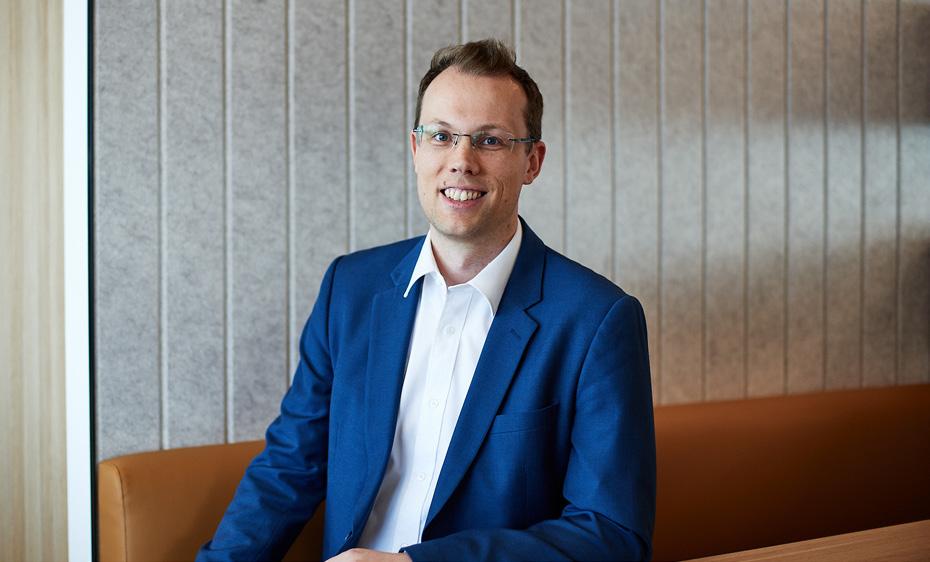
As technology becomes more intelligent and more human-like it is our human traits that become more valuable. For me in my current role, that is creativity and connection. This primarily comes down to three things:
a) the ability to come up with creative commercial models to solve for a client need now and into the future though built-in innovation programs.
b) the opportunity that I have to meet with so many organisations and executives to hear what they are trying to solve for and come up with service models to solve those needs is incredibly rewarding.
c) I am ultimately a connector that is able to distil insights from different conversations and experts that I have the opportunity to meet with and share those insights with the customers that
I get to meet. As an example, I met with a customer this week that has a need to solve for outbound campaigns. They were operating a legacy on premise contact centre platform that will be end-of-life mid this year. The truly fascinating thing was they were buying stacks of sim cards to present different numbers to customers when they were calling them. I was able to acknowledge their challenge. Talk through how we can eliminate their infrastructure, introduce rolling numbers through the provision of a number block, and onboard a single application that could solve for both telephony and digital campaigns in a single interface for their people. This solution delivers cost savings, new levels of redundancy, and a better customer and employee experience. What is not to love about helping a customer transform their world like that?!
As technology becomes more intelligent and more human-like it is our human traits that become more valuable
The CX industry is now focused on scaling by augmenting people and technology to work together
What do you believe are the most pressing challenges facing organizations looking to deliver exceptional customer experiences?
It is common in the industry when answering this question to talk about things like talent transformation/re-education, ability to adopt AI in a way that doesn’t expose them to litigation or unwanted media attention, or the ability to be agile enough to adapt to changing consumer preferences. However, more broadly I see three types of organisations at very different stages of maturity when it comes to driving CX transformation:
a) Capital and tech debt constrained: These customers are yet to find their way to the cloud. They are desperately looking for ways to free themselves from their technology constraints to be able to more effectively compete. For the most part, education and understanding of what is possible is lacking within their organisation. When speaking with these organisations there tends to be a sense of relief that there is a way forward and that they can optimise their spend and unlock new levels of efficiency. For companies like these I encourage them to find a navigator. Someone that can help them navigate the options, someone that has lived experience in delivering on those solutions, and someone that can pick up the phone and say – I have heard about this thing, would it work for me?
b) The experienced majority looking to do it better: In the Australia and New Zealand region we are quite progressive and have adopted cloud solutions at a rate that is faster than many other regions. This means, I have the opportunity to speak with organisations that
have already tried a solution, found it hasn’t worked for them – or they have outgrown it, and are now seeking to level up but in a very focused way as they have a very clear understanding of their problems and what needs to be solved. Coming from an informed place is fantastic. What these organisations need to focus on is to clearly articulate the pain that they are enduring right now. Transformation of pain is prioritised far higher than a nice to have. Where that pain isn’t clearly articulated and quantified at the executive level, I have seen these projects flounder and get deprioritised.
c) The industry leaders living on the bleeding edge seeking competitive advantage: There truly aren’t many of these organisations. Getting to meet them in itself is a privilege. Challenges that these organisations tend to have include buy-in from across the organisation. This means, ensuring interoperability across teams, applications, infrastructure, and suppliers. Projects for these businesses live and die by the ability to effectively drive organisational change. This means articulating the what’s in it for me (WIIFM) to each of the key stakeholders, including them in the decision and change journey, and ultimately celebrating together when it all goes wonderfully well!
How do you see the role of technology evolving in the future of service delivery, and what implications will this have for businesses and society?
The CEO of Atom Bank, a digital only bank in the UK, said in a recent interview that a 4-day workweek isn’t ‘progressive’, AI will make it ‘bloody logical’. What is clear is that the nature
of work is changing. We have historically scaled businesses with more people. The CX industry is now focused on scaling by augmenting people and technology to work together. There are the use cases we hear about that range from surfacing knowledge at the right time so our people can be across a broader range of services through to dynamic workflows that adapt and guide your team member as the conversation changes. These advances in technology are allowing us to realise new levels of efficiency without the need to scale the workforce.
HFS Research predict that by 2030 this will change again. We have all head of Software as a Service. The future is Service as Software where software delivered outcomes are delivered to customers at scale. There will be people in the background training models, managing exceptions, and developing future service strategies. What will be different is the focus of human delivery will change. I personally believe for those moments that really matter we will still seek the connection and empathy that a human-tohuman connection offers. This might be in moments of loss – this could be loss of health or loss of income. Moments of advice in critical moments – this could be in times of ambiguity where you might not be able to even form the right question, and you need guidance such as with your career or financial advice. Also, in moments where a premium or white-glove service is provided – this could be the purchase of a new luxury item where the buying experience is part of buying the actual good or service.
What is clear is that how we learn, serve, and contribute in the world is changing.
What is your leadership philosophy and how do you keep team engaged and motivate them?
Every time I meet a new team member or bring someone onto my own team I explain my ways of working. This offers up front clarity in how I work and my expectations of them. I have five principles that I follow:
a) Communication: Silence is the enemy. I would much rather you ask a question if you don’t know or call out if there is a problem. Being in the services industry it is our ability to communicate effectively to our customers and within our own business that matters the most. Communicate often and with purpose.
b) Speed: Customer’s value responsiveness. Speed is premium and is valued in so many aspects of our lives. We need to acknowledge customer needs, deliver and solve promptly otherwise our competitors will beat us to it.
c) Transparency: Hiding things from each other or our customers only ever backfires. There is no need to carry this burden. What is valued, is the ability to be open, honest, and transparent about a situation. It will foster trust and allow you to focus on solving for the problem rather than trying to obfuscate it.
d) Presentation: Consider any premium brand. How the product or service is presented matters. For me, this means how we present our work needs to be premium and how we present ourselves needs to match. Turning up with a presentation that looks like it was built by a child, and you are wearing what you might wear in the backyard offers non-verbal cues to a customer that are not going to support your messaging.
e) Can do attitude: This positive and expansive mindset can solve anything. Take on the challenge with energy and passion will lead to both personal and organisational growth.
We need to acknowledge customer needs, deliver and solve promptly otherwise our competitors will beat us to it
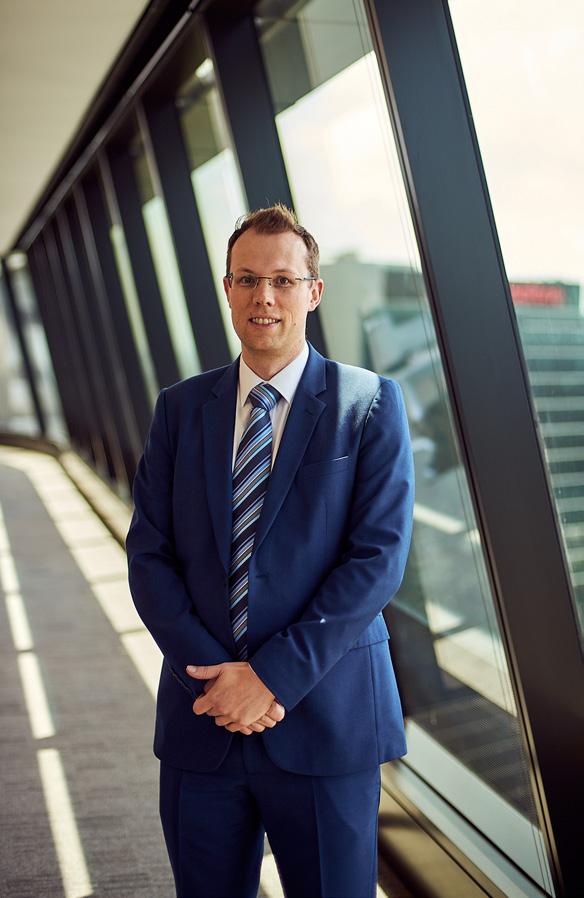
The same passion that I have in helping our customers is also applied to supporting the people in my team. This is my own demonstration of a can-do attitude where I’ll jump in right beside them to solve a problem or complete a proposal. The feedback I have received is that my team feel that I have their back in working in this way.
What has been your most careerdefining moment that you are proud of?
A little over ten years ago I was a consultant advising how to elevate the operational maturity of the processes that govern a technology delivery unit. I delivered a consult to a team that was not in a good space following a production
outage for their customer made national headlines. I came in, assessed the operating practices, and two weeks later delivered a transformation plan for them to follow. A few weeks later the General Manager called me and said, we love your plan, but we don’t have the capability to deliver it – will you come and work for me and deliver on your plan. I said yes! Four months later we restored service stability and doubled client satisfaction. A year on from that we increased profitability for the team by 46% while still maintaining a high level of customer satisfaction.
The ability to effect change at a community level has been a theme in the roles at my current employer. The project I’m most proud of is our expansion into South Australia. I was the co-author of a business case that received support from the State government that ultimately saw us employ over 1,000 people in twelve months. This was at the same time that the car manufacturing industry was coming to an end resulting in entire communities being disrupted. The re-training, offer of employment, and career pathways that we could provide offered a community hope and transformation. It has been modelled that we would contribute more than $1 billion dollars to Gross State Product over a tenyear horizon. The local council wrote to us at the time thanking us for the investment in the community as they had been able to measure a full percentage point drop in the unemployment rate following us establishing our operations. That level of community change will stay with me forever.
The last six months I have focused on being more active. We sit so much of our day that actively
The opportunity to lead a brand through a transformation program, rather than be the advisor that I am today, would be incredibly rewarding and inspiring
focusing on finding time to move now has to be a conscious decision. I started off walking with the objective of ensuring I do 200,000 steps a month – which is harder than you think as you have to be consistent. More recently, I have moved to running with the goal of being able to feel comfortable after running 5kms in 30 minutes – I’m currently panting and in a hot mess at the end. I also buck the trend as I’m not a morning person I tend to go for my run at night after dinner and I don’t listen to anything. Just being present, feeling the cool night air, and allowing my mind to wander is an amazing way to reset.
I’m also the father of two primary school aged girls, love to catch up with friends, and keenly follow Formula 1.
Where do you see yourself in the next 5 years?
Throughout my whole career I have adapted. I expect that the role I play in industry will be very different to the one today as I identify new needs and new problems to solve in order to stay relevant. The opportunity to lead a brand through a transformation program,
rather than be the advisor that I am today, would be incredibly rewarding and inspiring.
The common path and common advice is not necessarily worth listening to. For me, at 18 working as a retail sales assistant was an amazing education in building self-confidence to approach people and solve a problem for them. We also aren’t ready for things at the same time. When I first went to university at 18, I didn’t have the maturity for it. After dropping out of Uni, I found my way into working in a contact centre which was a great moment in learning how business works and what customer service at scale looks like.
My primary advice is, put your hand up for any opportunity that comes your way. Also, leaders appreciate anyone who is proactive. Identify a problem and ask if you can be the agent of change for that problem or project. Also, selfeducate. Read widely, enrol in courses, expand your personal network – these things will stay with you, and you will draw on that knowledge for years to come.

Lisa Riegel, PhD. enjoys long-term relationships with her clients and assists them with strategic planning, implementation, and executive coaching. She has been sought internationally for her counsel on program improvement and innovation. She has also developed statewide curriculum for adult learners and designed bespoke professional development related to company culture, engagement, customer service, and collaboration. In 2020, she launched JAKAPA, a software company designed to measure, train and track essential skills in self-management, innovation, social engagement, cooperation and emotional resilience. Her program has improved team communication and collaboration for many organizations as they work on strategic initiatives. In all aspects of her work, she strives to help organizations transition from a compliance mentality to a collaborative commitment to reform. Dr. Riegel earned dual bachelor's degrees in English and Secondary Education from Kent State University. She holds a Master’s Degree in Curriculum and Instruction from Otterbein University and a Ph.D. in Policy and Leadership from The Ohio State University. Her work has appeared in peer-reviewed journals and she has authored three books.


Dr. Lisa Riegel Chief Innovation Officer at JAKAPA, LLC
Most professional learning for leaders is aspirational and inspirational rather than concrete and operational. You learn to dream big and create high expectations. You work with leadership teams to create conceptual and innovative strategies that should improve outcomes. You buy software and learning programs and spend outrageous amounts of time and money on developing your staff. So, with all these innovative ideas and support, why do most innovative initiatives fall short of successful implementation? Because we fail to move from conceptual to concrete. Concepts guide change, but they don’t define it. In order to lead successful change, leaders need to have a clear picture of what they want and a clear pathway to get there.
Too often, leaders focus on the desired state (the aspiration) rather than the concrete steps (the operation) necessary to succeed. We expect our staff to see our vision, to desire the same vision, and to embrace the discomfort of change.
We forget that human beings fear change. Trying something new, leaving old practices behind, and accepting that new practices don’t negate the hard work we have been doing can challenge people’s professional identities and exhaust them. If we propose a change without establishing the need for change or what it looks like in practice, and if we fail to offer the necessary support and leadership, fear can outweigh bravery and your staff will defensively accept mediocre results as good enough.
To lead change, you need to become both aspirational and operational, the pathfinder and the model, so you can define the dream and lead the journey. My 7C Commitment Framework can help leaders design and lead innovation.
Clarity: If your staff doesn’t know what is expected of them or doesn’t understand the reason for change, they can resist or burnout. Innovative leaders clearly define the change.
To lead change, you need to become both aspirational and operational, the pathfinder and the model, so you can define the dream and lead the journey
They describe what they expect to see and hear when the change is happening. When your staff understands your vision in concrete terms, they can feel good about their work and the efforts they are making. When they don’t understand or “see” the change, new practices can feel overwhelming and pointless. Your staff needs to be able to visualize what you are asking them to do, which means you need to be able to visualize your change at the 10,000 foot view and the 10 foot view.
Coherence: We expect people to connect new learning to previous learning, but many people cannot see the connections. Make sure you are connecting your innovation to your company’s mission and vision, strategic priorities, and a clear need arising from your data. Situate the new initiative as embedded in the work you are already doing rather than positioning it as something totally new. Show people the evolution of the idea and look for longitudinal coherence. Ask yourself: How is your proposed change a natural next step based on what you have already been doing? Why is it the obvious choice to move you to the next level? How can you situate prior knowledge, practice, and professional learning as tools that have all been leading to this reform?
Cadence: Think of your staff as a crew team on a boat. On a crew of ten, the average American company will have two to three people rowing like crazy, about 5 looking at the scenery, and two or three actively trying to sink the boat. When you are leading an innovation, start with your rowers. They are the ones who will embrace experimentation. As they begin to see
positive progress, the sight-seeing bunch will start to try new practices. Eventually, your boat will have seven or eight people rowing together and they will not tolerate the two or three who are making waves.
Celebration: Change is exhausting, and people need to experience small wins along the way. Your staff needs to know the work they are putting in is noticed and the effort is moving them toward a clear and worthy goal. Celebration needs to be specific and authentic. It relies on your ability to establish clarity. If people know what is expected of them and are receiving positive and public celebrations and reinforcement, your celebrations will not only serve to show your appreciation, but will also serve to help others see what the intended change looks like. Celebrations are a key mechanism for developing collective efficacy, the magic dust of employee engagement.
Collaboration: The world works in teams. Strong teams have autonomy balanced with accountability. As a change leader, set up your expectations for teams and hold them accountable. Create feedback loops that will help your teams know that their work is being observed and you are there to support them. We measure what matters. Measuring the quality of collaboration and the output of your teams will highlight the importance of teams building their collaborative skills.
Coaching: Change is hard and emotional. Trying something new often means giving up something old. When you cannot see evidence that a staff member is making the required
Measuring the quality of collaboration and the output of your teams will highlight the importance of teams building their collaborative skills
changes, you need to coach them and provide constructive feedback that is specific, clearly connected to your expectations, and done in private. Thought provoking questions can be much more useful that telling people what to do. Look for the root cause of stagnation by listening to the ask within the complaint. When they are complaining, it is often a result of a training, logistics or enthusiasm gap. Once you
understand why the person isn’t progressing, you can design supports to close their personal gap. Coaching needs to be consistent and reinforce the clarity, coherence and cadence of your plan. You also need to be prepared to hold any resistors accountable so they realize the team is moving ahead with or without them, and there are consequences if they choose to stay behind. Well-designed coaching can motivate everyone and provide consistency that builds hope rather than frustration around your initiative.
Communication: Finally, the entire system of change requires strategic internal and external communication. Motivating your staff to take the first step and to maintain momentum requires strategic and careful communication. A lot of communication is designed as ego-centric. We have a message we want to send, we write it, and we send it. Often, we are disappointed with the results. People don’t read our communications or don’t do the intended actions. Strong leaders use strategic communication. They start by asking what the intended outcome of the communication should be. In other words, what action or reaction are you hoping for? Secondly, they consider the people they need to have that action or reaction. What is their work style? What messages motivate them? Are they rowers, watchers or sinkers? Finally, a strong communicator will create strategic messaging that is designed to direct the intended receiver to the desired outcome.
Innovation requires a strong strategy and implementation plan for each of the 7Cs. The 7C Commitment Framework can help you lead innovation, engage people, and enjoy positive results. It can move your staff from compliance to commitment.

Mariana Marques is a global operations leader with extensive experience across North America, South America, and Europe. As Senior Director of Operations Excellence at Firehouse Subs, she drives franchisee support, operational efficiency, and brand growth across the U.S. and Canada. Recognized as one of Jacksonville’s Top 50 Women Leaders (2025), she also leads Women of Firehouse, championing diverse leadership. With a background in London’s hospitality industry, she brings a global perspective to business transformation. Mariana holds an MBA in Marketing from Fundação Getulio Vargas and a Bachelor’s in Hospitality Administration from Thames Valley University.
Recently, in an exclusive interview with CXO Magazine, Mariana shared insights on what drives her passion for leadership and operations excellence, the secret mantra behind her success, future plans, words of wisdom, and much more. The following excerpts are taken from the interview.

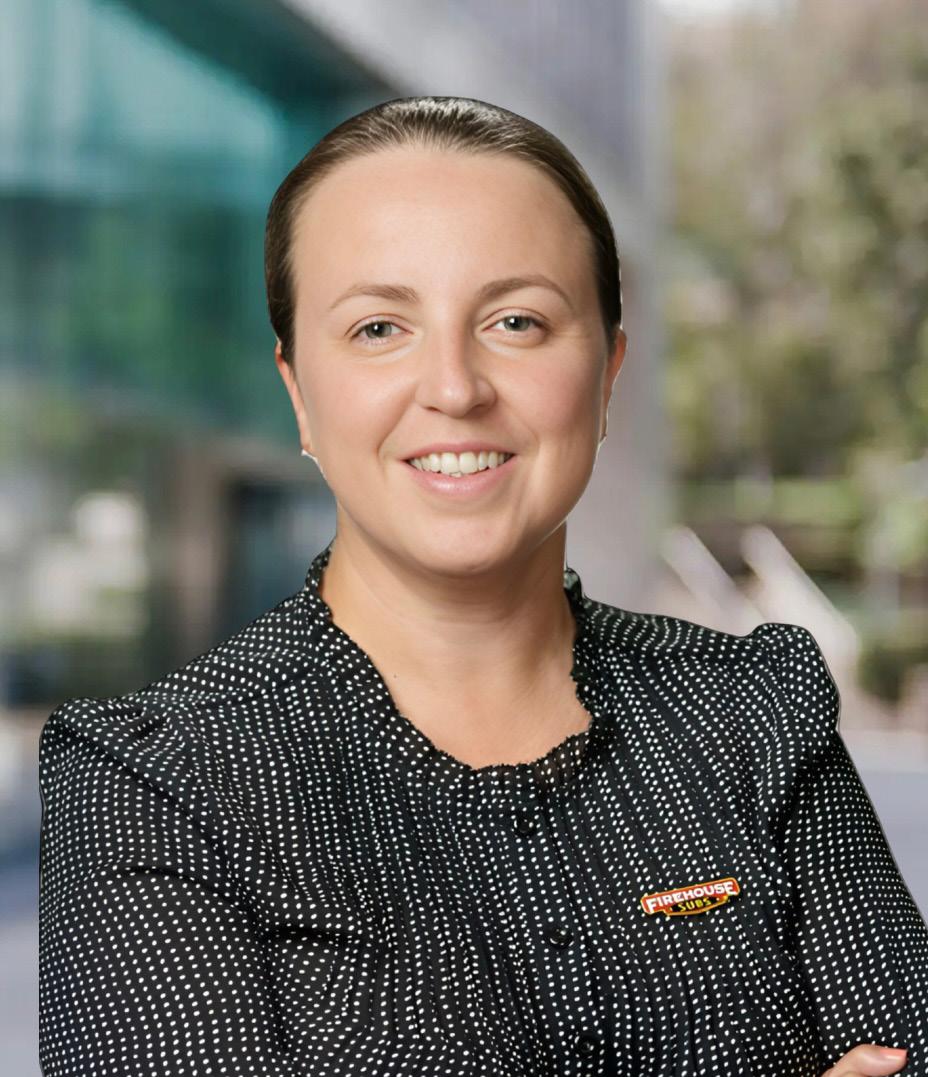
Mariana Marques
Senior Director, Operations Excellence, Restaurant Brands International
Hi Mariana. What drives your passion for leadership and operations excellence, and how do you stay motivated and inspired?
My passion for leadership and operations excellence is deeply rooted in my diverse experiences across multiple countries and roles within the hospitality industry. Starting in London, I embraced the city’s diversity and the dynamic nature of the food and beverage sector, which ignited my love for the industry. These experiences taught me the importance of adaptability and understanding individual strengths to bring out the best in teams.
I’m inspired by the tangible impact I can make on the business—seeing changes come to life in our restaurants, from enhanced team engagement to increased profitability and guest satsisfaction. Whether it’s implementing new operational strategies, improving efficiencies, or supporting franchisees in driving success,
witnessing these initiatives translate into realworld results fuels my passion. Being able to walk into a restaurant and see firsthand the difference we are making is incredibly rewarding and keeps me motivated to continuously push for excellence.
What do you love the most about your current role?
I cherish the opportunity to collaborate with franchisees and cross-functional teams to drive growth and innovation. My role allows me to work closely with people at every level—franchise owners, field teams, and corporate leadership—to develop strategies that enhance restaurant execution, improve guest experiences, and create meaningful business impact.
What makes this role even more fulfilling is being part of a brand with a strong purpose. Through the Firehouse Subs Public Safety
Authentic leaders don’t just dictate strategy; they inspire, support, and uplift their teams, ensuring that every voice is heard and valued
Foundation, we help provide lifesaving equipment to first responders, ensuring that every sub we serve contributes to saving lives. Knowing that our operational success directly supports this mission adds an even greater sense of responsibility and pride to the work we do.
Beyond the operational aspect, I love mentoring and developing future leaders within the organization. Seeing individuals grow in their careers and take on new challenges is one of the most rewarding parts of my role.
What role do you think the Women of Firehouse group plays in supporting women's leadership development within the organization?
As the leader of Women of Firehouse, I strongly believe in the power of representation, mentorship, and community in advancing women’s leadership. Our mission is to create a space where women in the organization can connect, support one another, and develop professionally.
By hosting events, facilitating networking opportunities, and providing leadership development resources, we aim to empower women within Firehouse Subs to pursue leadership roles and contribute their unique perspectives. The more we invest in diverse leadership, the stronger our company culture and performance become.
You were recently recognized as one of the Top 50 Women Leaders in Jacksonville 2025. Our readers would love to know the secret behind your success.
Being recognized among Jacksonville’s Top 50 Women Leaders is an incredible honour
and a reflection of the collective efforts of the teams I’ve been privileged to lead. The key to success, in my experience, lies in resilience, adaptability, and an unwavering commitment to empowering others.
Every step of my career has been shaped by embracing challenges, learning from setbacks, and staying focused on long-term growth. Whether working in international markets, leading operational transformations, or mentoring future leaders, my goal has always been to drive impact and build strong, inclusive teams.
Do you notice a lack of women in technology? If so, why do you think that’s the case?
The conversation around diversity in leadership is evolving. What’s most important is ensuring that organizations foster environments where talent, innovation, and leadership are recognized and nurtured—regardless of gender. Companies that prioritize diverse perspectives and create equitable opportunities not only strengthen their business but also drive meaningful industrywide progress. At the end of the day, the focus should be on building inclusive cultures that allow the best ideas and leaders to emerge, shaping the future of business and technology in ways that benefit everyone.
Looking back, which women in your life have had the most influence on your career?
Throughout my career, I’ve been inspired by resilient women who’ve shaped my leadership journey. At Avon in Brazil, I managed a team of incredible women, including a single mother who overcame personal challenges to become one of the top sales leaders in her region. Her
determination and strength reinforced my passion for empowering others.
Leading Women of Firehouse has also connected me with inspiring female leaders, highlighting the importance of mentorship and support in leadership development. These experiences have shaped my approach— emphasizing resilience, empathy, and the power of uplifting others.
What does the term "authentic leadership" mean to you?
To me, authentic leadership means leading with integrity, self-awareness, and a genuine commitment to people. It’s about being transparent in decision-making, standing by your values, and fostering a culture of trust and respect.
Authentic leaders don’t just dictate strategy; they inspire, support, and uplift their teams, ensuring that every voice is heard and valued.
What is your secret behind striking a work-life balance?
Balancing a demanding leadership role with personal life isn’t easy, but I’ve learned that it requires intentionality and discipline. Setting clear boundaries helps me stay present in both work and personal moments, while delegating effectively allows me to empower my team and focus on high-impact initiatives without feeling overwhelmed. I also prioritize self-care, whether it’s through exercise, family time, or simply unplugging when needed, because I believe that being at my best personally allows me to be at my best professionally. It’s not always perfect, but I’ve found that balance isn’t about dividing time equally—it’s about making conscious choices that align with my values and priorities.
Where do you see yourself in 5 years from now?
In five years, I see myself continuing to drive transformational change in operations leadership, expanding my impact on a broader scale while mentoring and developing future leaders. My focus will remain on enhancing operational excellence, fostering innovation, and strengthening brand performance, ensuring businesses continue to grow and succeed in an evolving industry. I aim to take on new challenges, lead high-impact initiatives, and further refine strategies that improve efficiency, profitability, and guest experience. Ultimately, my goal is to keep evolving as a leader, driving continuous improvement, and making a lasting impact wherever my career takes me.
What advice would you give to aspiring women leaders in operations and leadership roles?
My advice to aspiring women leaders is to own your voice, embrace challenges, and never underestimate the value of mentorship and networking. Surround yourself with people who inspire and challenge you, seek out learning opportunities, and don’t be afraid to take risks—even when stepping outside your comfort zone feels intimidating. Leadership isn’t about having all the answers; it’s about being adaptable, continuously growing, and having the confidence to advocate for yourself and others. The path may not always be linear, but by staying resilient, proactive, and committed to excellence, you can create meaningful opportunities and pave the way for future leaders.

Charmone Adams is an Advisory Principal with Grant Thornton LLP and is based in the New York Office. Since joining the firm, Charmone has been working closely with many SEC, FRB, and FINRA regulated entities. He has over 15 years of experience in financial services and his portfolio comprises U.S., U.K. and APAC based companies, such as investment managers, investment advisory firms, banks, and broker-dealers. In recent years, his focus has been on providing clients with guidance on key enterprise risk, regulations, internal controls, and internal audit. Additionally, Charmone has experience in corporate accounting and external reporting. Charmone holds a BSc. (Business Administration) from Central State University and an M.B.A. in Finance from Franklin University. In addition, he holds a Certified Public Accountant (CPA) license with the state of New York and is a Certified Fraud Examiner (CFE). Charmone serves on the Board of Directors for multiple organizations, such as The AICPA Foundation, Charter High School of Law, and Social Justice (CHSLSJ), and Blacks on Wall Street (BoWS)
In a recent interview with CXO Magazine, Charmone Adams discussed his experience with risk management and regulatory compliance. He shared his views on compliance and managing financial risks, technology, automation, and artificial intelligence, internal controls and risk management frameworks, and many more.


Advisory Principal with Grant Thornton LLP
What are some key lessons you’ve learned in your career that have shaped your approach to risk management and regulatory compliance?
Positivity equals success. A cheerful outlook can drive success in any profession, including risk management and regulatory compliance. Approaching challenges and setbacks with a positive mindset gives you the power to stay focused on solutions rather than obstacles. As a consultant, displaying optimism by balancing recognizing inherent limitations and changes with pursuing meaningful progress is essential. Our profession comes with changes, such as changes in the industry, the market, and politics. Some aspects of your work may be beyond your control, so focus your energy on the areas where you can influence.
As previously stated, it is essential to embrace change. The only way to stay ahead is by embracing change and remaining determined. In 2015, I moved my family from Washington, DC to New York, NY for a job opportunity, determination, and a dream. This decision has led me to acquire extensive knowledge in risk management and regulatory compliance. It is essential always to keep your mind open and embrace change. Successful executives cultivate a mindset that allows them to adapt to new situations and challenges and are not afraid to explore solutions or emerging trends.
I have learned the importance of a strong mentor and team collaboration throughout my career. Whether you are managing a team or participating in risk management and regulatory compliance projects, the collective effort of a diverse group of skill sets adds value. It brings a unique perspective that could enhance success. As we collaborated and shared ideas, our
teammates may uncover innovative solutions that could improve outcomes.
Never stop learning. Continuous learning is a foundational aspect of life and crucial to professional growth. Learning is a journey and provides a level of gratification when gaining knowledge and understanding. The education process built a high level of confidence that I can navigate complex situations in life. A mindset of life learning ensures one can constantly adapt to new developments, challenges, and obstacles. I have always viewed education as a way to stay current and relevant in my profession by pursuing or maintaining certifications, attending conferences, and engaging in industry discussions. It is a fact that investing in professional development benefits one career and contributes to personal growth. Growth comes when one pushes themselves to go beyond the norm.
Advances in technology have introduced new capabilities for control test automation that create added value for internal and external auditors and management — wherever controls are embedded in an organization’s business processes or its reporting. When technology is used to evaluate the operating effectiveness of controls: The entire population of data can be assessed, rather than just a sample, automated testing that once was manual can relieve personnel from labor-intensive, often repetitive work. Many of today's advanced automation technologies were in their infancy in 2013 when the revised Internal Control—
Integrated Framework issued by the Committee of Sponsoring Organizations of the Treadway Commission (COSO) described how technology can support ongoing evaluations of controls.
The COSO framework described how continuous monitoring techniques can provide a high standard of objectivity and enable efficient review of large volumes of data at a low cost. The framework indicated that combined with robust review and analysis of results by knowledgeable personnel, automated monitoring can provide for efficient, effective ongoing testing. Today’s tech-savvy companies and internal and external
auditors deliver on COSO’s vision. CTA activities are being designed and implemented in organizations’ continuous monitoring activities, providing management valuable feedback and customized alerts when deviations exceed acceptable thresholds.
CTAs also are being designed and implemented as supervisory control activities, such as authorizations and approvals or reconciliations. When implemented skillfully and reviewed and monitored by competent personnel, CTAs can provide benefits that include a more frequent or continuous testing
Whether you are managing a team or participating in risk management and regulatory compliance projects, the collective effort of a diverse group of skill sets adds value
of controls, timely information for decisionmaking, and identification of errors or issues that may be missed due to human error or the limitations of a sample-based approach.
Regardless of the industry, CTA can be a powerful tool for internal and external auditors who are evaluating the operating effectiveness of controls to support or gather evidence about the effectiveness of internal controls. Manual tests of these controls often are laborintensive and rely upon sampling. At the same time, automated tools and techniques have the potential to reduce the need for repetitive human labor while extending testing to the entire population.
Within controls, the uses of CTA may vary widely based on industry. Take revenue recognition, for example. A company in an industry or sector with a subscription-based business model that recognizes revenue over time may have different CTA opportunities than a company with a point-in-time revenue model based on discrete individual sales. CTA can be implemented outside of internal controls to control operations, reporting, or compliance objectives.
What are the biggest challenges organizations face today in maintaining regulatory compliance and managing financial risks?
It is no wonder regulatory compliance is cited as one of the top concerns of company leaders. Regulatory requirements for financial institutions are increasing, adding time and complexity to compliance management. But, with the support of AI, institutions are finding opportunities to improve efficiencies and better prepare for compliance.
CTA activities are being designed and implemented in organizations’ continuous monitoring activities, providing management valuable feedback and customized alerts when deviations exceed acceptable thresholds

With all regulatory requirements, companies are evaluated on their internal controls to ensure they operate safely, soundly and comply with applicable regulations. Institutions should conduct internal regulatory testing and monitoring to prepare for external evaluation. To evaluate if their internal controls are functioning effectively, an institution first assesses the processes they have in place with a Risk and Control Matrix (RACM). A RACM evaluates and verifies that the controls sufficiently mitigate risks, prevent fraud and ensure compliance in areas like Anti-Money Laundering, KnowYour-Customer, data privacy and information security. This process also determines when a control is weak or if there are exceptions to it.
For most institutions, these controls are manual, dependent on human intervention and decision-making (which takes time). An added challenge is that companies often need to create unique control processes because every institution manages these processes differently. You might think incorporating AI into compliance management would only add more risk. But, when institutions collaborate with partners to strategically leverage AI into particular parts of the control design and assessment process, they can gain greater staff efficiencies and confidence in their compliance processes.
In addition, an escalation of geopolitical conflicts, most notably Russia’s attack on Ukraine, has led to numerous sanctions issued by the U.S., UK, and European Union that demand the scrutiny of boards in their oversight role. My experience has revealed that compliance functions at organizations worldwide are struggling to keep up with the depth and breadth of the sanctions. Meanwhile, individual
With the growing interest in generative AI, a straightforward way for internal auditors to locate uses is to consider which applications are getting a productivity boost from algorithm-enabled text, code, image, speech, and video capabilities
boards are battling separate concerns. Some boards are not receiving enough information from management on sanctions compliance processes and topics. Other boards are getting so much information from management on these issues that keeping them all in context is difficult. Leading boards ensure they get the correct information and appropriate training on sanctions and compliance issues.
How has the role of internal audit evolved with advancements in technology, automation, and artificial intelligence?
Organizations are moving quickly to adopt artificial intelligence (AI) solutions but controlling the risks is essential. Internal audit teams might need to re-frame their roles in the organization to address new AI capabilities. The Artificial Intelligence Audit Framework from
the Institute of Internal Auditors defines internal audit's role in AI as helping an organization evaluate, understand, and communicate the extent to which artificial intelligence will have an effect, negative or positive, on the organization's ability to create value. With the growing interest in generative AI, a straightforward way for internal auditors to locate uses is to consider which applications are getting a productivity boost from algorithm-enabled text, code, image, speech, and video capabilities. It is easy for internal audit to get stuck in the details of an AI solution. Still, auditors must first consider how the solution connects to the organization’s most significant goals.
To get the most value out of an AI internal audit, you need to adapt the audit to the current maturity of the organization's AI adoption. To do that, performing an AI maturity assessment that includes these elements: Gain
an understanding of the entire AI landscape throughout the organization, perform a high-level AI risk assessment, Evaluate the organization’s governance structures, policies and procedures, assess data security and privacy processes and requirements, and evaluate the alignment of the organization’s AI deployments with its ethical guidelines and values. Your assessment should also consider the foundational programs on which AI solutions depend. Examples include enterprise ERM, Ethics and Code of Conduct, data governance, SLDC methodology and processes, and third-party risk management. The AI risk assessment should consider open findings and known limitations of these programs. After an initial AI maturity assessment, internal audit can move to a “deeper dive” that considers more technical aspects of AI algorithms and development. This deeper dive can take advantage of the Artificial Intelligence Risk Framework recently issued by the National Institute of Standards and Technology (NIST), which is organized around three primary functions. It is essential for internal audit teams to fully understand how and where other teams are already using AI — and even how the internal audit team can use AI.
Generative AI (GenAI) is a powerful way to harness AI capabilities — and a powerful way to enhance your work every day. GenAI can incorporate natural language processing, analysis, ranking, machine learning, and other capabilities from artificial intelligence. Internal audit teams can use GenAI to help organize and analyze information, create scenarios, and make suggestions.
What best practices do you recommend for organizations looking to enhance their internal controls and risk management frameworks?
To add the most possible value, it is essential to consider some best practices. This starts with a spirit of collaboration and innovation for relationships, processes, and controls. Educating stakeholders, involving first, second and third lines of defense, and aligning your risk management and assurance functions are also especially important. To ensure stakeholders understand the requirements, leadership should actively promote the company’s commitment to internal controls and involve members of their risk management and assurance functions in the sales process. This allows one to talk with potential business partners and customers, discussing relevant internal controls and how you take a systematic approach proactively and productively to effectively and efficiently managing risk.
Adding value also means working smarter: Know the risks you are trying to mitigate before discussing controls.
Find those “killer” controls that address multiple risks.
Develop enterprise control standards to establish expectations and drive consistency across decentralized operations.
Challenge the control mix – automated vs. manual, preventative vs. detective, and transactional vs. process vs. entity-level.
Reduce control duplication, being careful not to be “over-controlled.”
Maximize the use of technology in control operation and your risk management and assurance functions.
Without discipline and intentionality, controls will inevitably grow in number and complexity over time. Staying focused on continuous improvement and challenging the status quo will ensure you operate a lean and mean control environment. It is essential to strike the right balance of risk, cost, and value. There is also tremendous opportunity to improve efficiency and reduce control monitoring and testing costs dramatically. Control testing is a repeatable, recurring, and predictable process. As a result, it is ripe for automation using low code solutions, analytics, and robotic process automation (RPA) platforms. Once established, control test automation (CTA) dramatically reduces the time to evaluate controls, allows you to assess controls more frequently, reduces the cost of compliance and offers the added benefit of covering the entire transaction population.
With increasing regulatory scrutiny across industries, how can businesses stay ahead of compliance requirements while remaining agile?
The relentless and rapid advancement of technology, increasingly complex business operations, and sophistication and speed of business transactions continue to create more instances where internal controls matter. As more aspects of the business and customer engagement are digitized, controls become more important, especially as suppliers and business partners are integrated into the value chain. With the advent of pervasive digitization, technology and operations are moving beyond “your four walls” and now touch every financial, administrative, operational, and customerfacing process. For outsourced processes and systems, it is increasingly accurate that you can
delegate the task, but not the responsibility of protecting your customer’s data and ensuring its integrity. Sure, you can transfer some risk with insurance and firm contracts, but that will not address the negative impact on your reputation and future growth.
Many companies are embarking on transformational efforts – establishing shared service centers, redesigning business processes and operations, implementing new business applications (often in the cloud) and more. These companies are establishing intentional internal controls workstreams with resolute and knowledgeable resources. This approach ensures controls are adequately considered and incorporated in future state design. Effective and deliberate planning will result in a more successful outcome. In this context, controls integrated into the fabric of systems and process design will undoubtedly result in controls that are more efficient and cost effective to operate, test, and demonstrate operating effectiveness in the future. Historically, controls have been used to look in the rear-view mirror and detect issues, with some being preventative and none being predictive. The modern company leverages controls not only proactively to manage risk, but also to improve agility and speed and identify revenue enhancement and cost management opportunities.
role does data analytics play in modern internal audit functions, and how can organizations leverage it effectively?
All activities performed by internal audit functions can benefit from data analytics. The insights derived from data analytics have been found to deliver value in internal controls
To ensure stakeholders understand the requirements, leadership should actively promote the company’s commitment to internal controls and involve members of their risk management and assurance functions in the sales process

evaluation, fraud detection, compliance monitoring and other key activities. Data analytics can be applied to a broad range of cases, providing a corresponding rise in the value derived from the technology. However, using data analytics effectively requires the right tools, people with the right skills, and an approach designed to maximize the technology's advantages. To help internal audit functions successfully implement data analytics and get the most out of their capabilities, companies should develop best practices and use technology to provide maximum value to their organization.
What emerging trends do you see shaping the future of business process optimization, financial risk management, and regulatory compliance?
Financial trends are emerging in light of the change and uncertain economic conditions that have buffeted the industry in recent years.
New regulations are coming, as the traditional guidance for companies is experiencing the effect of several factors impacting their business, which may not have been significant in the past 20 years
Nonetheless, investors’ views of the industry are improving. Some comment trends include challenging economic circumstances that demand fiscal discipline and pursuit of mergers or divestitures that drive efficiency and create new opportunities, increasing cybersecurity threats in a world that has become increasingly digital, an evolving regulatory landscape, and a difficulty attracting and retaining talented workers. Capital management is paramount. Despite supply chain disruptions, unprecedented inflation, global economic uncertainty and tightening resources, the investment community’s views toward investing have become more favorable, partly due to entities distributing earnings to investors for the last several years while maintaining cash flows from operations. Organizational readiness is key to business resilience. More specifically, organizations that treat cybersecurity as a category of enterprise risk (as opposed to strictly an IT phenomenon) are eminently better prepared to recover from cyber-attacks. This is because enterprise risk preparedness introduces key concepts of multidisciplinary teams and the regular practice of critical incident response protocols — both required to bounce back from a cyber incident.
The second component of business resilience focuses on identifying the required niche expertise not present within your employee base. Once these specialists are identified (e.g., outside counsel, forensic experts), getting them plugged into initiative-taking planning and practice exercises increases your resilience quotient dramatically. The third component of an effective business resilience strategy consists of cyberinsurance coverage. Engaging with a qualified cyberinsurance broker is a key takeaway, both for fit and function — at the time of policy selection/renewal and for assistance during an actual incident. Despite recent dramatic increases in insurance premiums, cyberinsurance remains critical to effective business resilience.
New regulations are coming, as the traditional guidance for companies is experiencing the effect of several factors impacting their business, which may not have been significant in the past 20 years. These impacts include the changing atmosphere around new financial reporting regulations, tax legislation, and a shifting focus on growth, while minimizing expenses. All of these areas will have a considerable influence on where the finance industry goes over the next several years.





James is the founder and CEO of Scoota. Prior to this, he was co-founder and CEO of Tangozebra, the leading provider of creativefirst digital marketing solutions in Europe. Tangozebra was sold to DoubleClick/Google in 2007. In 2003 James was nominated as the most influential person in new media, by New Media Age (NMA) magazine; two years later Campaign Magazine placed him fourth in a survey of the greatest Internet pioneers. In 2006 he was nominated at the NMA awards for the greatest individual contribution to new media. Today, Scoota is a leading provider of creative-first, omni-channel programmatic solutions.


What would you think of if I said ‘white horses’? Perhaps Flat Eric means something to some of you; or Nick Kamen and his stonewashed Levis?
According to Wikipedia, the Guinness surfer still holds the number one spot for the greatest television ad of all time. For so many reasons it worked. I can imagine the brainstorming sessions as the team listed out ideas of when the ‘wait’ is worth it. They landed on surfing and brought the energy to life with white horses.
Brand engagement done correctly.
Digital advertising almost found its own equivalent creative mojo, before programmatic arrived and things started to go a little sour in the that department. Being digital, technology sits
at the heart of all progress, and it’s technology that has hindered as much as helped.
The first online ‘banner’ appeared in October 1994. Back then, accessing the Internet was a gentle process. Dial-up modems delivered barely enough bandwidth for the host site to load, let alone carry advertising. Banner ads were small, and they were light; there was little room for ambitious creativity. The job of the banner was to elicit a click; many tactics were tested.
By the mid-late ‘90s, very basic interactivity was being trialled within banner ads. For this to be possible required the coding language, Java; installed by default in the popular browsers of the time. While these advances made sense for an interactive medium, the lack of available bandwidth prevented anything ambitious being
What the advertising industry now needed was a creative canvas; a tool that would allow designers to experiment and build without the need to hand-write code
deployed; equally, the build required hand coding, which immediately introduced barriers.
There are moments that mark the key stages of Internet advertising, and without question, the arrival of broadband is one. For the UK, that moment was the year 2000, when NTL launched its ADSL, ‘always on’ connection. The first step in resolving the bandwidth issue had been taken; suddenly the door was open for true creativity.
What the advertising industry now needed was a creative canvas; a tool that would allow designers to experiment and build without the need to hand-write code. That tool was Macromedia Flash.
Flash was a system that allowed designers to create imagery out of vector-based instruction. Crudely, the language told the computer which colour to display at an individual pixel level. It had been designed to allow greater control of visual elements over restricted bandwidth, such as adding animation and more visually interesting levels of interactivity. While vector images were fun to play with, they were far from ideal. Flash-based websites tended to look ‘cartoony’, and for a while, only certain browsers carried a Flash player; so a separate, downloadable plugin was needed in some cases.
But Macromedia kept up with the advances in bandwidth and what those could mean to their system. By 2002, video had been added; that together with photographic imagery changed the dynamic. The creative industry had its authoring suite; there was bandwidth to play with, and awards to win.
With creative agencies experimenting heavily with video-based Flash executions within websites, the scene as set for much more creative adverts. But to convert these new Flash
executions into working adverts, control all the delivery aspects, and reveal the user engagement data, additional technology was needed. Enter Tangozebra and Eyeblaster.
Original ideas that blended video and interactivity, flowed. Boundaries were pushed; over-intrusive format types were killed, and the display side of digital advertising enjoyed a period where creativity counted; where wonderful ideas entertained and engaged users. This was a time when targeting was limited to user behaviour within those destination sites on a media plan; when the context of the pages targeted were equally a consideration. Exciting times.
And then in 2011, Apple launched the iPad, without support for Flash.
With Flash falling away from mobile devices in favour of a new mark-up language, HTML5, creative agencies faced a challenge: HTML5 required hand coding; that didn’t work for them – they weren’t coders.
What also didn’t work, was how HTML5 behaved in its early guise. Browser support was shaky to start with, as was being able to deliver the JavaScript code needed to manage the downloading and execution of an interactive multimedia creative built in HTML5.
JavaScript has a habit of breaking web pages. It can interfere with the code (CSS) that organises how a page is laid out. Historically, adverts requiring JavaScript were systematically pretested on each site listed within the campaign media plan, in advance of the campaign going live; any anomalies would then be fixed by technical teams, such that the delivery was a successful experience for all the stakeholders.
But programmatic trading means real-time bidding on a single media space that in the
moment aligns to the advertiser’s target metrics. Delivering single files such as a JPEG, PNG, or even video, isn’t an issue, but to respond to a bid in real time with untested JavaScript into a website that happens to be where the ideal target audience is, isn’t an option, for fear of what that script might do to the site.
To solve this issue, and as is still very much the case today, the market shifted towards buying rich creative activity through networks of pretested websites, transacted as a marketplace. The buy side can access the marketplace vendors and buy into their inventory via a deal ID within their demand-side platform.
Sounds good, but maintaining a marketplace of pre-tested websites sufficiently large to be interesting enough to support major activity, is time-consuming. Websites evolve; code needs to be up to date. As such, the marketplace model usually results in considerable margin on the media spend being eroded as vendor revenue, and due to the nature of the delivery, levels of transparency and/or fraud management enjoyed through the more traditional approaches to programmatic trading, can be restricted.
And so, for lack of an alternative, the market has largely relied on expensive delivery into restricted reach, for non-videobased high-impact creative. Until more recently, this hasn’t necessarily been a big issue; after all, programmatic has pretty much evolved to be predominantly about retargeting, and in that capacity, creativity has been very much an afterthought.
Sitting centrally in the mix has been the application of ever-increasing layers of data, exploited for the purpose of enriching
programmatic bids. As an industry we’ve adopted an approach that isn’t about entertaining and rewarding users, but much more about persistent and repeated presentations of retargeted creative. I have a small dog who is obsessed with a green ball; he drops it at my feet constantly. It makes me think of the less effective types of programmatic advertising.
Confidence in the third-party cookie is waning. This means contextual targeting is back in vogue for those who aren’t trying to achieve retargeting nirvana via first-party data. To drive strong performance from contextual targeting, great creative is needed. Get the blend of creativity and context right and performance follows.
I used to live near a road in London where every now and then, a French market would appear. I’d pop out on a Saturday morning to buy a pint of milk and newspaper; I’d return with a basket full of goodies. The creative experience had won me over. In that capacity it was an organic experience.
For purposes of online advertising, organic audiences will be lured in by an attractive and relevant creative execution placed in the right environment, at the right time. This is where interactive, rich creative can work wonders - engaging and retaining a user, building positive sentiments towards the advertiser along the way, and delivering tremendous levels of insightful data.
The technologies that allow true creativity to flow to wherever the relevant audiences and contextual fits are, now exist. Seek to bring true creativity and contextual relevance into your campaigns, regardless of the channel, you may be surprised at the impact.


Kathryn Simons-Porter holds a Masters in Business Management and a Post Grad Diploma in Applied CX and Emotional Intelligence. More recently Kathryn coauthored the Global No1 Best Seller ‘The AI Mindset’. Starting her career initially in tech and selling contact centre solutions to some of the world’s leading brands, Kathryn became a CX Specialist in 2015. Kathryn has gone on to speak at a number of CX Day events and is a member of various associations, including the global community, Women in CX. Kathryn is currently the VP of Sales (EMEA) for Local Measure, a global CX platform, powered by Amazon Connect.
Recently, in an exclusive interview with CXO Magazine, Kathryn shared insights on what fuels her passion for CX and how her perspective has evolved over her 25-years of career, her secret to striking work-life balance, future plans, words of wisdom, and much more. The following excerpts are taken from the interview.

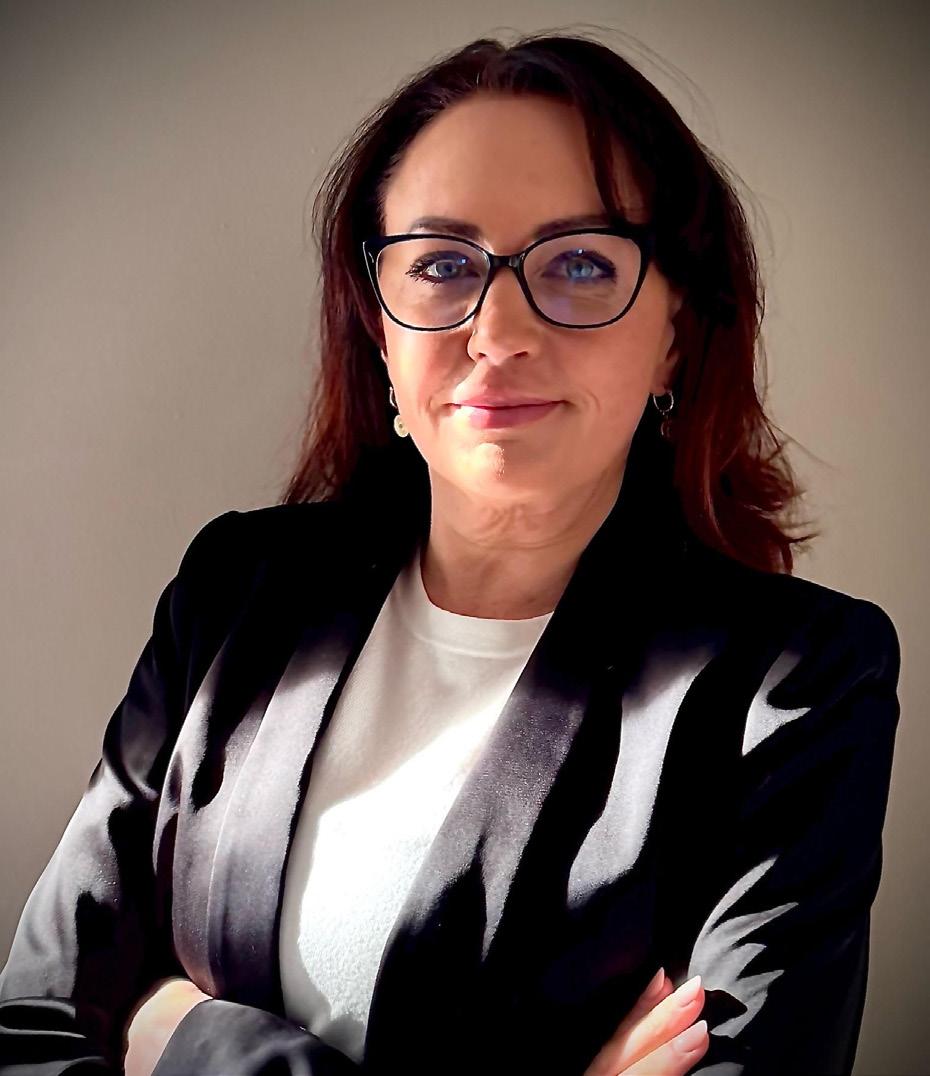
Kathryn Simons-Porter VP Sales EMEA, Local Measure
Hi Kathryn. What drives your passion for revolutionizing customer experiences, and how do you stay current with emerging trends and technologies?
What drives my passion is a real interest and fascination with human psychology - what drives human behaviour. I have been in the CX industry now for over 25 years and so I like to think I have picked up a few things along the way, and while I started out selling telephony and contact centre technology, and now working for a comprehensive & consolidated CX vendor, I very much focus on the outcome that we are trying to get to - which is typically to improve Csat yet also while reducing operational cost.
In terms of how I stay current - well it helps that I am simply very interested in the subject of customer experience, and thoroughly enjoy reports such as Contact Babel’s array of insight, and the Customer Satisfaction Index, for example - these two report types give me a good understanding of the organisation and the customer’s perspectives. I also tune into podcasts when at the gym, Martin Teesdales, Adrian Swinscoe - all great, fun learning. Plus of course, I work for a world class CX vendor so specialising in AI in the context of CX is just part of my job!
What do you love the most about your current role?
Over the last few years, I have studied the subject of Emotional Intelligence, and in particular how EQ plays a key role in the delivery of high performing teams, greater customer service, and overall better business performance. Despite working for a leading technology vendor, I
work with companies now looking at how AI can be used across the entire customer journey, looking for where AI EQ can be applied. Due to the breadth of our consolidated CX platform I really believe that we have all the right tools needed to improve Experience for all - whether thats Customer, Employee - or the Business. I love using my YEARS UPON YEARS (!) of experience to use by helping guide other sales professionals who inturn are guiding their accounts in this really saturated minefield or a market.
Can you share your perspective on the importance of empathy and human touch in customer experience, and how you promote these values in your own leadership practice?
Well, empathy is just one EQ capability. It is important, but empathy alone will not resolve customer issues. Empathy needs to be used in conjunction with (for instance) Active Listening, ability to Demonstrate Ownership etc. Self Awareness and Awareness of others. These attributes lead to far greater outcomes than empathy alone. Empathy alone is of little use in customer service, all it will do is create more traffic with repeat callers needing to get issues resolved. Customers just want to get their issues resolved.
Tell us more about your book, "The AI Mindset," and how you believe AI can cultivate emotional intelligence in the workplace?
I was asked to co-author this book in Spring 2024, after Erik Sevensen (the lead Author) read my Post Graduate Dissertation. My Post Grad is in ‘Applied CX and Emotional Intelligence’
Despite working for a leading technology vendor, I work with companies now looking at how AI can be used across the entire customer journey, looking for where AI EQ can be applied
and the Dissertation was about the use of AI in the Contact Centre. The Post Grad Dissertation was written through the lens of AI in March 2021 however, the book is written through the lens of GenAI, and looks at various examples of using GenAI to cultivate EQ in workplace employees across the entire organisation, and the outcomes than then follow. Its still pretty early days and AI and GenAI should always be used with a Human in the Loop approach to ensure accuracy, removal of bias and to ensure ethics.
What has been your experience as a frequent CX and EX judge, and what you look for when evaluating customer experience excellence?
I admit that the book took up so much time last year, and my house move and a family bereavement that the Judging went on hold for 2024. I hope to get back to it in the next season, as I love to hear about all the wonderful things that companies do for their employees and for the greater good of their customers. As for what I look for, I look for companies that take the time to understand the end-to-end journeys, measure structured and unstructured feedback in realtime - use technology appropriately, there are still companies out there that employ people to manually listen to calls for agent quality monitoring purposes, which is pretty ludicrous, not to mention expensive. Give agents AI desktop tools so they can easily do their jobs, for me its all about the people.
Do you notice a lack of women in CX? If so, why do you think that’s the case?
You ask a female that has always worked in tech this!! When I started there were less than 5% women in tech sales, for well over a decade I had to be ‘one of the boys’. The contact centre
operation has always been woman dominant, and in CX I see a good split. Local Measure recently sponsored an Executive lunch with the CCMA, our discussion topic being on DEI and there were 2 men and 18 women in attendance. There are some seriously smart, incredible, knowledgeable female powerhouses out there but male or female - there is no relevance in that, its about the work ethic and the credibility of the individual.
Looking back, which women in your life have had the most influence on your career?
My late mum was certainly an inspiration from an early age, working with two kids, and then completing two degrees whilst poorly with terminal cancer. Mum was great at bringing people together, creating community. We travelled a lot for my dad’s job and each place we landed in, mum would create a women’s group (that I affectionately called ‘The Handbags Club’). She ran for Local Council, had a strong moral compass and was a great role model. My Aunt holds a Phd, had had a very successful career lecturing and leading on the subject of palliative and bereavement care and also is the founder of an award winning children’s charity (Seesaw) in Oxfordshire. So two women from my family that are held in my core when it comes to values and principles.
What is your secret behind striking a work-life balance?
Probably age! You learn as you get older to listen to your body and your surroundings and act accordingly. Having run my own company and also having worked for many global organisations (and timezone challenges) - I
have never been a 9-5 worker. My achilles heel being sleep - I suffered from Chronic Insomnia throughout my 30s and it took a while to re-train my brain to sleep, and I did this training with Cognitive Behavioural Therapy. I am now very mindful and aware of triggers. That said, and as my husband will concur, I am never too far away from my laptop! Exercise is SO important for my mental health, and so I keep fit, I ran the Medoc Marathon for Andys Mans Club (a men's mental health charity) two years ago, and I have also hiked a few mountains and done a bit of skydiving for charity - although I think those days are now over! I’m happy in my garden, spending time with family, friends and of course our cocker spaniel, Willow.
Where do you see yourself in 5 years from now?
I am very lucky that I love what I do, and I invest in continuous self development. For instance I am just about to commence another EQ qualification, focusing on the intrinsic link between EQ and business outcomes. So I dont think I will ever stop learning, which I think is really important in this industry. Things move too fast to stay still - technology, economic, social, political, human psychology - all these factors reshape the industry in a never ending way. I hope we will have finished our house renovations in five years (!) and I can sit in the garden with my husband and Willow or spend time with my all time best friend who lives in New Zealand, sipping local wine with the sun on our faces. From a professional perspective, I don’t know, I am now 50 and so a NED role is attractive, working with a start up for instance or spending more time helping companies applying EQ.
Its still pretty early days and AI and GenAI should always be used with a Human in the Loop approach to ensure accuracy, removal of bias and to ensure ethics
What advice would you give to aspiring leaders looking to drive customer-centric transformation within their organizations?
I took my first CX certification in 2015, courtesy of the wonderful Ian Golding, and back then there were hardly any CX folk in organisations. Now its a crowded room. There is a LOT of noise. Linked In is full of bloviate, which hinders root cause and subsequent fix of issues. For newly qualified CX leaders or people handed CX projects - wow, there is SO much noise to tune out.
At a time when budgets are being cut, consumer spending is low, we need to get back to the basics - measurement of good old fashioned metrics of FCR. Understand intent, consolidate data, bring your systems together, work cohesively across the operation. You know, the lightbulb was NOT created by trying to improve the candle, the lightbulb emerged from a radical shift in technology. With the technology now at our fingertips there has been no better time to really drive change.
After rising to become a consumer & business tech publisher, Mark then worked in the healthcare and financial media sectors. He sold his healthcare media business in 2002 & then formed a boutique M&A business, originally specialising in the media sector. Providing over 100 SMEs and corporations with strategic advice and orchestrating the successful sale of their companies and brands, has given him privileged insight into how businesses evolve and the lessons to be learnt. His passion lies in creating forums for communities to understand and react to complex but profound disruptive innovation. This led to the creation of his strategic advisory business, Big Picture Insight, which provides funding, Board level representation and mentoring. He recently invested in and became Chairman of Skills Of The Future, a business helping a passionate community of women, looking to develop their digital marketing and business skills in this fast developing and market altering sector.

Chairman at Skills of The Future
Too many entrepreneurs have great ideas which are either not viable or require a rethink.
There is a library of information on great business practice but don’t be deceived. Your business requires a unique sensitivity, so what & how you use this information is key.
Don’t kid yourself, no one has all the skills required and reading about great practice is not doing it! Do you imagine the sporting greats achieved excellence because they read or were told how to? No, they spent years honing their skills, slowly improving.
No wonder businesses fail, few have adequate experience, and all-encompassing skills to succeed without support. So let’s take an overview of what you need to create and grow an SME.
Are you an entrepreneur? I always wanted to be an entrepreneur, I was so impressed and in awe of those who, out of the ether, risked all to create something valuable for customers, wow!
So, what are the key characteristics. Surveys and research indicate the desire to be their own boss and create something new and special. Other reasons include: dissatisfaction with their previous corporate roles, a passion for their ideas and the desire to innovate.
Successful entrepreneurs are risk taking optimists and fighters. I was fortunate to grow up in a community where I met successful entrepreneurs, I learned they never stopped trying and were not afraid of failure, in fact they said it provided invaluable insight.
Rebellious and impatient! This is certainly true of myself. My father drilled into me, never
Successful entrepreneurs are risk taking optimists and fighters
trust authority and do exhaustive homework to understand the world, don’t just accept what the majority think.
So, it is not about making money. It’s about working with a great motivated team to provide valuable products and services to whom you serve. However, commercial success allows you to reinvest and further improve your offering.
Too many ‘great ideas’ sound wonderful but are not commercially viable. This will be a variety of reasons. You need to follow a rigorous process to help ensure the proposed investment of time and money is not wasted. Below is my ‘Quick Guide’ for following the right path to success. Apologises, for its limited coverage.
The right tools and expert support will help you make the right steps from the first day to the last. Many senior executives get buried

in the minutia of creating and running their tactical operation. SMEs need the cool, trained & analytical strategic eye of seasoned successful third-party entrepreneurs and experts. NOTE: regarding your business plan, a so-called entrepreneurial expert who has not walked the walk is to be avoided. You want someone who has trodden a similar path, experienced the highs and lows: navigating effectively.
One unfortunate observation is that as an advisor, how someone interprets and puts into play your advice is subject to interpretation. That is why we all need ongoing support, helping to keep us on course. Ask Serena Williams or Lewis Hamilton, if you can.
Expertise. Become an expert in your sector by working for a market leader, before starting an SME.

Passion. 24/7 passion drives outstanding success. You don’t have to be Einstein, if you love what you do you, work becomes a pleasure (well, mostly). Passion will allow you to overcome obstacles.
Philosophy. Inspired, viable new ideas require deep, deep knowledge & contemplation. Especially if linked to technology and disruptive innovation. Don’t jump to conclusions, really explore the options.
Remember, your mind wants an easy solution, resist!
Investment Prospectus. Even if you are not looking for 3rd party investment this is a must. It provides a thorough analysis to assess the opportunity in a clear and rational manner.
Shareholder Agreement. A framework for the management and operation of a company. It outlines the rights and obligations of shareholders, provides safeguards, a policy for introducing future shareholders and the mechanism for the potential sale of the business.
The Opportunity
Mission. Create an easy-to-understand statement of intent.
Focus. Make one idea work before embarking on others.
Simple. Whatever your idea, it should be simple to understand and implement.
Research. Lots & lots of. Directly communicate with your T/A, in-depth and systemised. Positive research does not mean guaranteed sales. Even if buyers are keen: timing, budgets, authorisation process, competitive action etc can prevent or slow the sales of great products.
Business Concept. Let it slowly evolve, the more you understand the clearer the picture.
Business Plan. Detailed enough to provide both a working document to work to and potentially act as a guide to investors. The foundations of the business.
Budgeting. Detailed and conservative. Sales are often slower than anticipated. You need an inaugural budget that assumes things go wrong. Don’t then massage, if looks unviable. The chances are it is not viable!
Funding. Only progress if adequately funded. Include a fair amount for working Directors so budgeting is realistic. Review BP to minimise negative cashflow at the point when assess company viability.
Viability. Have a date when assess. If below minimum agreed target, be ruthless & pull the plug. No ego play, don’t gamble, admit defeat & cut your losses.
Business Practice
Financing. Never under finance.
Cashflow. Understand it. At conception organise activity to minimise negative cashflow to point when can assess company viability.
Accounting. Set up an easy-to-use system that you can align to management accounts.
Monitor. Have ongoing & monthly KPI’s. If way off budget act on, even if radically.
Refresh. Annually analyse your business and create a plan to improve your offering. Keep vital & keep ahead.
Growth Pains. Once successfully up and running, taking the business forward is fraught with potential pitfalls. You need to regularly assess, with the right 3rd party support.
USP. Vital, without any USP’s what makes your offering stand out?
Clarity. The value of what you have created should be crystal clear and idiot proof, in both external & internal communication. For example, is this obvious on your home page?
Value. What benefits will you provide to your marketplace?
The Team. From day one, have onboard a successful SME entrepreneur, as mentor and confidant. Outsource to bring onboard skills and flexibility.
Sales & Marketing. A minefield. Deserves a thesis. Lots of companies will offer you solutions, beware, do they really understand your business and how best to tailor promotion?
Creativity. Use picture power both in external communication and internally, such as Mind Maps. A picture is a clearer and quicker communication than lots of heavy text.
So, you’ve created a growing SME, what next? A successful business has a momentum of its own that no longer relies on a few key individuals. It is characterised by a strong team, with a robust company organisation and structure, promoting established brands.
You need to follow a rigorous process to help ensure the proposed investment of time and money is not wasted
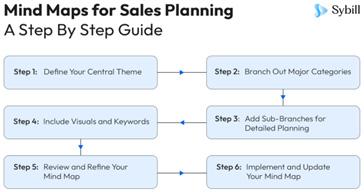
To attract and keep star performers, that help drive the business forward, requires exciting new horizons to reach for
Momentum is key. To attract and keep star performers, that help drive the business forward, requires exciting new horizons to reach for. Standing still is going backwards.
Some SME’s become large corporations, the majority that achieve success are acquired. Absorbed into the right company, with the integration handled well, enables the support, expertise, funding and synergies of the acquirer to accelerate growth, provide greater opportunity for the team, reach and go beyond previous potential horizons.
Perhaps I make it sound simple, easy, just put into practice great theory. However, every business needs to adapt theory to the sensitivities of its unique world and the personalities of you and your team.
I am painfully aware that because of the need for brevity for an article of this length, that the information provided might not be interpreted and implemented ideally.
If you wish to explore these concepts in detail and reflect on how they might apply to you and your business, please get in touch. I never charge for an intro chat and always enjoy hearing your unique story and vision.
If you have the entrepreneurial spirit, well done! Successful entrepreneurs are a rare breed but an essential ingredient in developing the world economy and in the right way.
You help prevent the negative impact of the drift towards oligopoly & mediocrity, breaking new ground in efficiency & valuable innovation, to the benefit of the community.
Now that’s worth fighting for!






